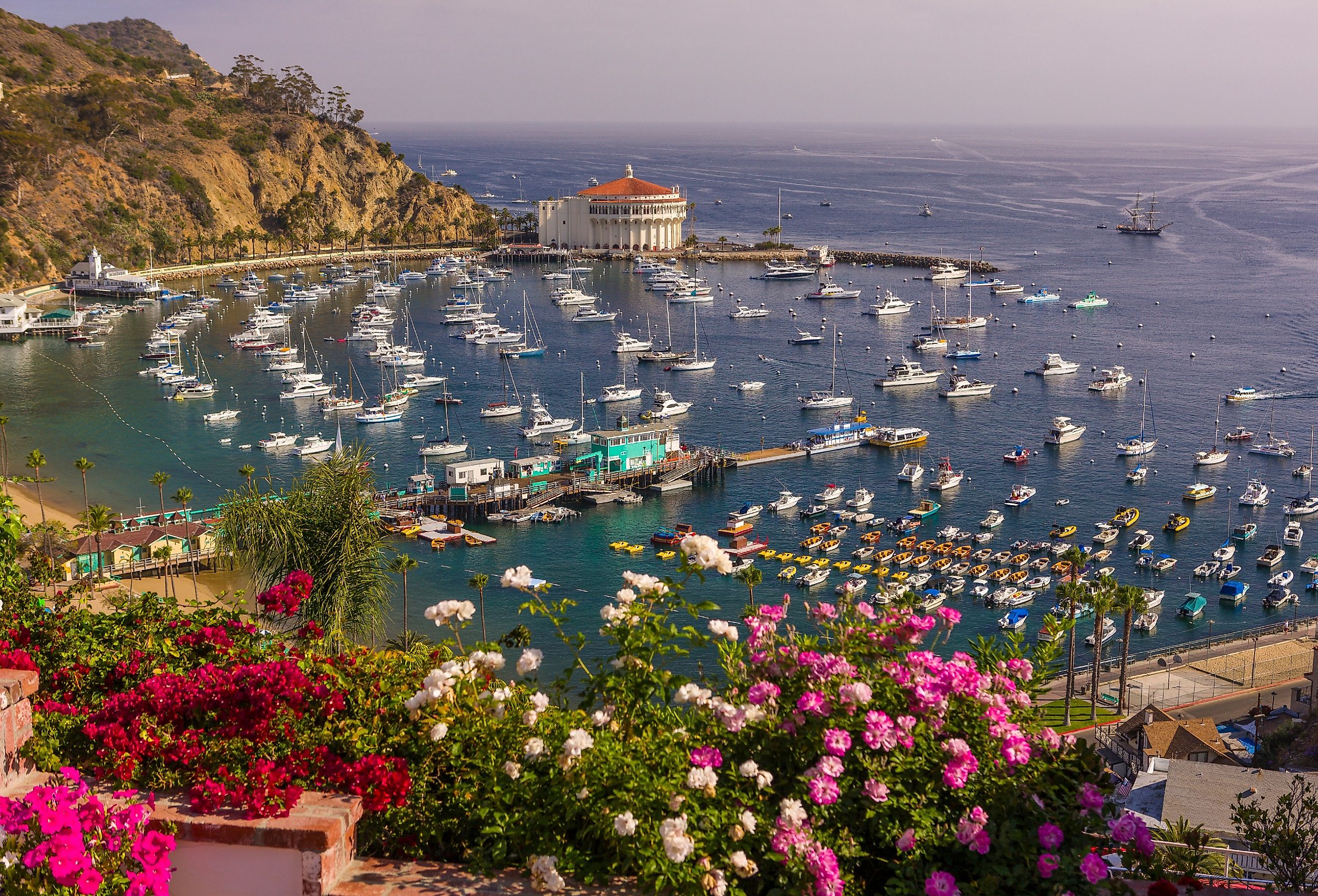
11 Secluded Towns in California
California is the most populous state in the US, home to over 39 million residents, and spans beaches, deserts, forests, and mountains. While major cities like Los Angeles and San Francisco dominate much of the state's tourism, California is also dotted with small, secluded towns far from the hustle and bustle. From the coastal bluffs of Mendocino to the apple orchards of Julian, each town is a chance to delve into California’s past while engaging in outdoor adventures. Despite their seclusion, these eleven towns are worth traveling to.
Carmel-by-the-Sea
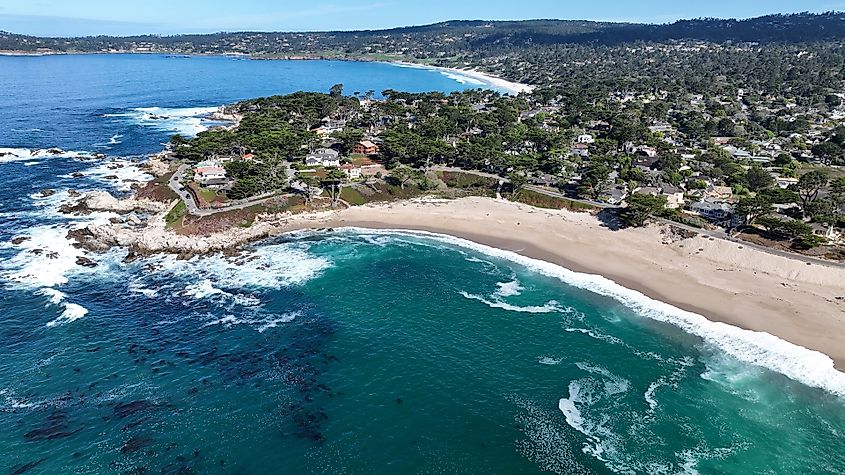
Dating back to the late 1700s when the Spanish established Mission San Carlos Borromeo de Carmelo, Carmel-by-the-Sea was shaped by the artists and writers who flocked to the town in the early 20th century. Known for its European-inspired architecture, this town also stands out with its unique building codes, which ban street addresses and chain restaurants.
The Carmel Mission is a key historic site for those interested in learning about early California history. Point Lobos State Natural Reserve is nearby and has excellent hiking opportunities with coastal trails. Finally, stroll down Ocean Avenue—the town’s heart—local shops, galleries, and eateries. The Pilgrim's Way Community Bookstore and Secret Garden cannot be missed.
Mendocino
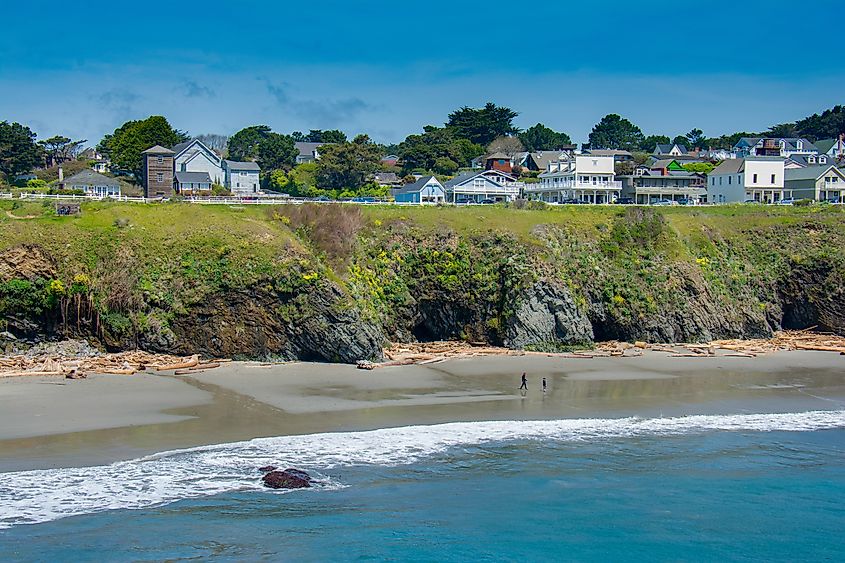
A few hours north of San Francisco lies Mendocino, a town whose history is tied to the once-booming lumber industry. Founded in the 1850s by pioneers, Mendocino’s original Victorian homes still line its streets, a testament to the town’s past. Today, Mendocino has a population of just around 700, an idyllic escape from the hustle of modern life.
Nature lovers are drawn to Mendocino Headlands State Park, where walking trails hug the cliffs, with views of the Pacific Ocean. Whale watching, a favorite activity, occurs seasonally from these coastal bluffs. The Kelley House Museum is another must-visit, with exhibits that trace Mendocino’s evolution from a lumber town to a beloved artistic community. After that, head to Big River Beach to kayak or unwind along the shoreline.
Julian
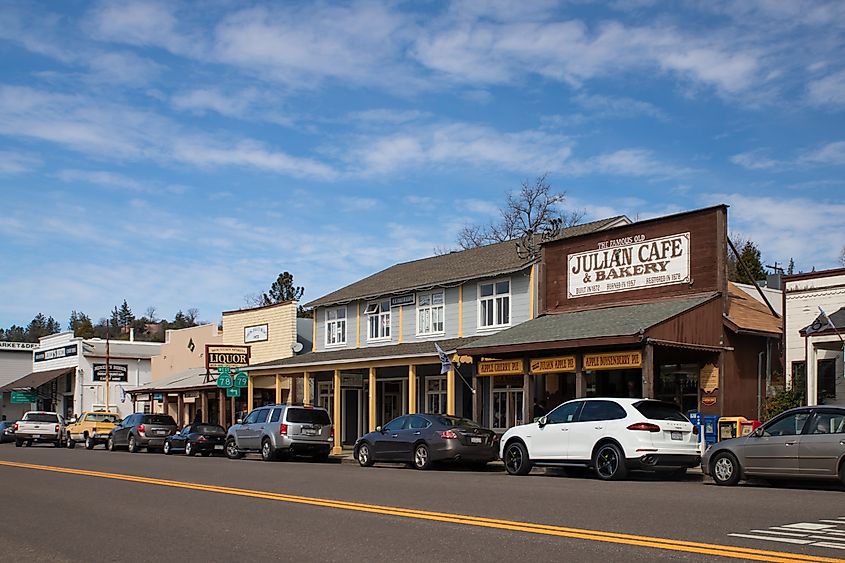
Known for its gold rush roots and apple orchards, Julian is tucked away in the Cuyamaca Mountains. When gold was discovered in the 1870s, Julian quickly became a bustling mining town, though it managed to remain relevant even after the gold rush ended due to its ideal climate for apple cultivation.
The Eagle Mining Co., a preserved gold mine, has guided tours—great for gaining a hands-on understanding of the town’s mining past. After learning about its history, visitors can sample one of Julian’s famous apple pies, made fresh with apples from the local orchards at the Julian Pie Company. For those craving outdoor adventure, Cuyamaca Rancho State Park has over 100 miles of hiking trails.
Nevada City
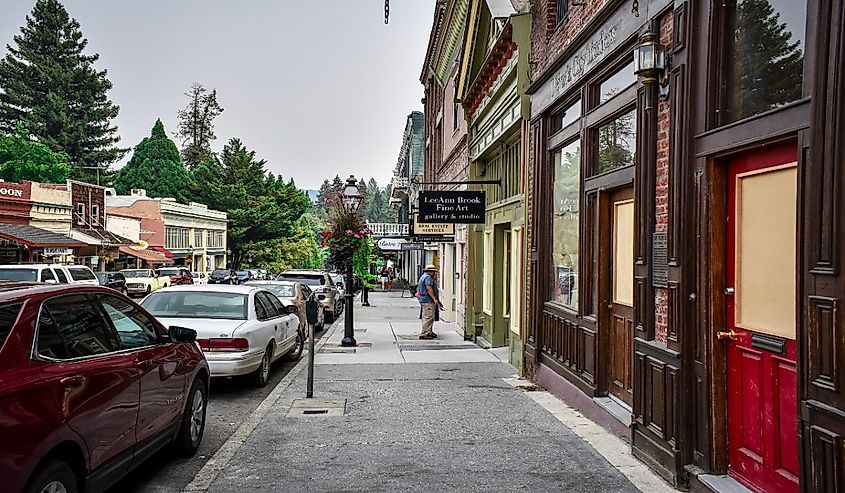
Nevada City, located in the Sierra Nevada foothills, was established during the 1849 California Gold Rush. As one of the first gold mining towns, Nevada City quickly grew into a bustling settlement. By the late 19th century, it was a key player in the state’s mining industry. Today, with a population of just over 3,000, the town has preserved much of its Gold Rush-era architecture, making it a living history destination.
While some California towns have embraced modernity, Nevada City has stayed true to its roots as a Gold Rush-era hub. Founded during the Gold Rush in 1849, the town grew into one of the largest settlements in the Sierra Nevada foothills. Today, it remains a time capsule of the past, with many original buildings and streets still intact.
The Nevada County Narrow Gauge Railroad Museum is an in-depth look at the role railroads played in the town’s mining economy, complete with historical exhibits and restored locomotives. A short drive from town, Empire Mine State Historic Park gives you access to one of the oldest and most significant gold mines in California. For outdoor enthusiasts, the Independence Trail is a neat hike along a repurposed mining ditch.
Avalon (Santa Catalina Island)
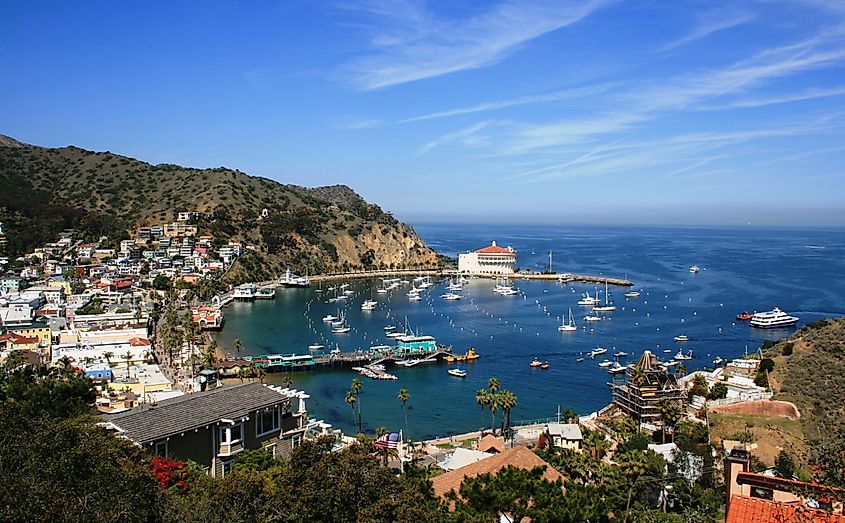
On Santa Catalina Island, Avalon boasts a history that blends leisure, Hollywood glamour, and natural beauty. In the early 20th century, William Wrigley Jr. invested heavily in the development of the island, transforming Avalon into a sought-after destination for mainlanders and Hollywood elites. Today, the town still carries the allure of a bygone era while also being a peaceful retreat.
The iconic Catalina Casino, an architectural masterpiece built in 1929, is a cultural landmark and not a gambling venue as the name might suggest. It hosts movie screenings and live performances, continuing its long tradition as a community entertainment center. For a special perspective on Avalon’s marine life, a Glass Bottom Boat Tour reveals the underwater ecosystems surrounding the island. The Wrigley Memorial & Botanic Garden further celebrates Avalon’s history, highlighting native plants and Wrigley’s lasting impact on the town.
Ferndale
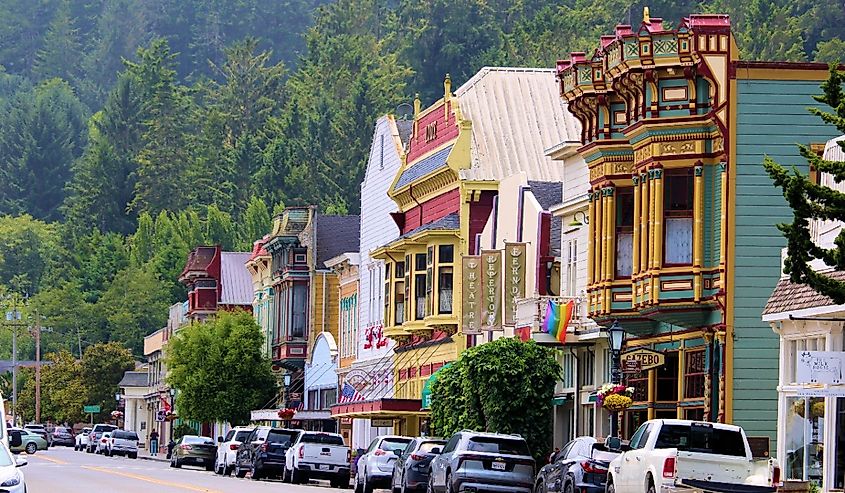
Unlike most towns in California, Ferndale is known for its preservation of Victorian architecture. Established in the 1850s as a dairy farming community, the town’s Main Street is a living museum of ornate, colorful buildings that have remained largely unchanged since the 19th century. Ferndale’s secluded location in Humboldt County also provides easy access to some of Northern California’s most beautiful natural areas, including the Lost Coast on the Pacific Ocean.
Fern Cottage is an intimate look into the lives of one of the town’s founding families, with guided tours that highlight original artifacts and the family’s role in the dairy industry. Russ Park is a peaceful bird sanctuary with trails that wind through redwood groves for a quiet hike and birdwatching. After that, stop by the historic Victorian Inn, where you can enjoy a meal in a restored 1890s building.
Mariposa
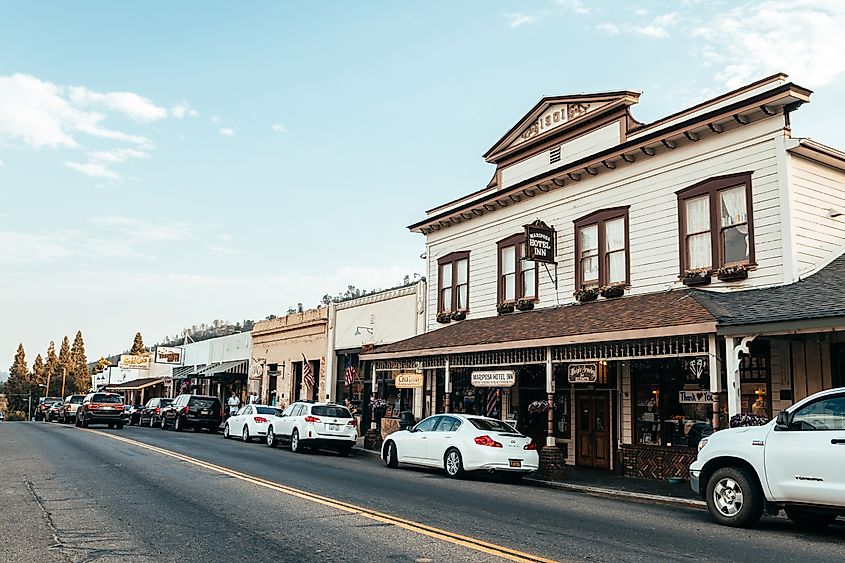
Just outside the boundaries of Yosemite National Park, Mariposa is a gateway to one of the most beloved natural wonders in the world. However, the town’s significance extends beyond its proximity to Yosemite. Established during the California Gold Rush in 1849, Mariposa became a central hub for miners, and today, it continues to preserve its small-town charm with a population of fewer than 1,500 residents.
The Mariposa Museum and History Center tells the story of the town’s gold mining days, complete with exhibits on local Native American culture. The Mariposa County Courthouse, still in operation and dating back to the mid-19th century, is a different glimpse into the town’s past. Outdoor enthusiasts will appreciate the Mariposa Creek Parkway, a quiet trail ideal for enjoying a peaceful walk along the creek.
Lone Pine

Best known as a gateway to the Sierra Nevada Mountains and the nearby Alabama Hills, the secluded town of Lone Pine has a history tied to both Hollywood and outdoor exploration. Since the early 1900s, Lone Pine and its surrounding landscape have served as the backdrop for hundreds of films, especially Westerns. But beyond its cinematic fame, the town also offers unparalleled access to some of California’s most dramatic nature.
The Museum of Western Film History showcases memorabilia from the many films shot in the area for a sense of the town’s connection to Hollywood. Adventurers can challenge themselves with a hike on the Mount Whitney Trail, which leads to the highest peak in the contiguous United States. For those who prefer a less strenuous option, the Alabama Hills has rock formations and scenic drives that highlight the beauty of the high desert.
St. Helena

Set in the heart of Napa Valley, St. Helena has played a critical role in the development of California’s wine industry since the mid-19th century. The town’s rich soil and favorable climate have made it a prime location for vineyards, and today, it is home to some of the most famous wineries in the world.
Wine enthusiasts will enjoy a visit to Beringer Vineyards, one of the oldest wineries in Napa Valley, where tastings and tours reveal the artistry behind winemaking. The Culinary Institute of America at Greystone offers more than just culinary education—it’s a destination where you can see exhibits, take cooking classes, or simply admire the architecture. For a taste of history beyond wine, Bale Grist Mill State Historic Park has a fully functional 19th-century grist mill that continues to produce flour using traditional methods.
Pescadero

Pescadero is known for its agricultural heritage and proximity to the Pacific Ocean. Established in the 19th century as a farming community, the town’s fertile land continues to support local farms, many of which provide fresh produce to the surrounding areas.
Pigeon Point Lighthouse, one of the tallest lighthouses in the United States, has views of the Pacific and is a favorite spot for photography. The rugged coastline of Pescadero State Beach, with its tide pools and windswept cliffs, is the perfect backdrop for a peaceful walk. At Harley Farms Goat Dairy, you can tour the farm, meet the animals, and sample locally-made goat cheese.
Cayucos

Cayucos, a small beachside town on California’s central coast, traces its origins to the 1860s when Captain James Cass built a pier to support trade between ranches and passing ships. Today, this laid-back community retains its pioneer spirit.
The historic Cayucos Pier still stands as a central feature of the town. The attraction is great for fishing or simply taking in the coastal breeze. Estero Bluffs State Park, just north of town, has scenic hiking trails along bluffs overlooking the Pacific, where visitors can spot marine life and seabirds in their natural habitat. For those interested in the town’s early history, the Cass House, once the home of the town’s founder, has been restored and transformed into a boutique restaurant and event venue.
California’s secluded towns provide a stark contrast to the more well-known tourist destinations. From the Victorian architecture of Ferndale to the coastal charm of Mendocino, each town has something spectacular to offer. Visiting these places allows you to experience California in a different way—one where the pace is slower, the communities are smaller, and the connection to the past remains strong.











